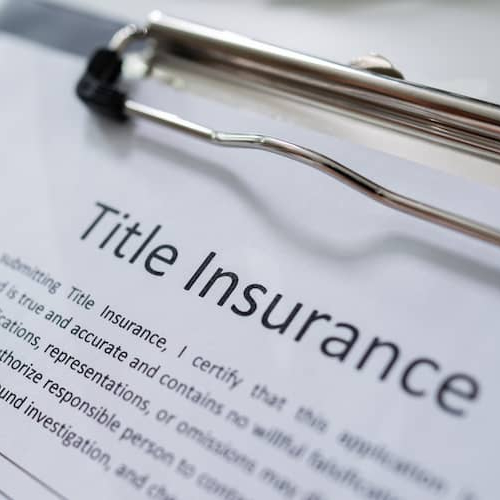Featured resources

7-minute read
What is a mortgage rate?
A mortgage interest rate represents how much you’re paying to borrow funds, expressed as a percentage. Learn more about what determines your rate.
Read more

14-minute read
Joint mortgage: A complete guide for borrowers
A joint mortgage involves multiple borrowers who are responsible for paying. Find out how a joint mortgage works and whether it's a good option for your needs.
Read more

5-minute read
Title insurance: What you need to know
A bad title can cause complications and turn your dream home into a nightmare. Use this guide to learn how title insurance can protect your property purchases.
Read more

3-minute read
Recording fees, defined and explained
What are recording fees, how much will they cost you, and what will happen if you don’t pay them? Find all the answers in our guide to recording fees.
Read more

4-minute read
What is a mortgage maturity date and how does it work?
A mortgage maturity date indicates when you’re expected to make your last mortgage payment. Learn more about how maturity dates work and how to find yours...
Read more

5-minute read
Easement appurtenant: What it means and how it works
An easement appurtenant gives nonowners limited access rights to a property. Find out how this type of easement might affect your property.
Read more

5-minute read
eMortgage: What is it and how does it work?
An eMortgage is a convenient option that uses electronic documentation and signing processes. Learn about how it works and whether it may be right for you.
Read more

4-minute read
Primary mortgage market explained
Wondering what the primary mortgage market is? Check out our guide to learn all about the primary mortgage market and how you can navigate it successfully.
Read more
9-minute read
Quiet title action, explained
Quiet title actions help resolve disputes over property ownership. Learn how this legal process works and when it’s necessary to clear title issues.
Read more

10-minute read
Foreclosure: What it means and how to avoid it
If you’re behind on your mortgage and facing foreclosure, you still have ways to avoid losing your home. Learn how to confidently navigate this legal proc...
Read more

5-minute read
Solid offers come with a Verified Approval Letter
A Verified Approval Letter shows the seller that your offer should be taken seriously. Learn how a VAL can be an advantage that gets your home offer accepted.
Read more
10-minute read
Earnest money: What is it and how much is enough?
Earnest money protects buyers and sellers in a real estate transaction. Learn how an earnest money deposit works and how it can also make your offer stand ou...
Read more
5-minute read
Title endorsements: What they are and when you need them
A title endorsement is a modification to your title insurance policy that provides additional coverage. Learn more about title insurance endorsements here.
Read more
9-minute read
Preforeclosure: How it works and what you can do
Preforeclosure is the first legal step toward foreclosure. Learn about how the process works and what options you have for keeping or letting go of your home.
Read more
6-minute read
The mortgage constant explained
The mortgage constant is the amount paid in debt service each year divided by the amount of a loan, expressed as a percent. Learn more about mortgage constants.
Read more

6-minute read
Mortgage Credit Certificate (MCC): How it can help you afford your mortgage payments
What is a Mortgage Credit Certificate (MCC)? This federal tax credit can help first-time buyers save money. Learn how MCCs work, who qualifies, and how to apply...
Read more

6-minute read
Understanding the right of redemption in real estate
A right of redemption helps homeowners recover their homes if they are at risk of foreclosure. Understand your legal protections as a borrower with our help....
Read more

5-minute read
A guide to TILA-RESPA Integrated Disclosures (TRID)
Learn how TRID mortgage guidelines, or “Know Before You Owe” rules, protect borrowers, including what they mean for you during the home buying proce...
Read more